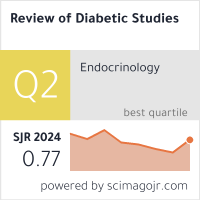The Creation And Assessment Of Rota-Haler Capsules Containing Solid Lipid Nanoparticles Of The Asthma Medication Terbutaline Sulphate
DOI:
https://doi.org/10.70082/smkn6g89Keywords:
Terbutaline sulphate, Solid lipid nanoparticles, Rota-haler capsules, Pulmonary delivery, Bioavailability, Controlled release, Asthma.Abstract
Objectives: The objective of the present study was to enhance the pulmonary bioavailability of the anti-asthmatic drug Terbutaline Sulphate by incorporating the drug into solid lipid nanoparticles (SLN) and then formulating it as inhaler capsules.
Methods: This required the optimization of process parameters such as the type of solid lipid, drug-to-lipid ratios, and type and concentration of surfactants used in the formulation. SLN were prepared by the combination of two methods: hot homogenization and sonication. The prepared nanoparticles were evaluated for their particle size, zeta potential, entrapment efficacy, surface morphology, and in vitro drug release. The prepared SLN was further formulated as inhaler capsules, and evaluation tests were also conducted for the capsules. Capsules were evaluated for weight variation, content uniformity, and in vitro deposition of drug using a twin-stage impinger.
Key findings: The prepared nanoparticles were spherical in shape and within the size range (50–240 nm), as confirmed by transmission electron microscopy (TEM). SLN showed 75.7% release in a controlled manner for eight hours under the tested conditions. The selected formulation had 71% entrapment efficacy with better flow properties. The present study suggests that SLN of an anti-asthmatic drug provides a stable product with improved drug loading for enhanced bioavailability, targeted action, and sustained release of drugs in the lungs with fewer adverse effects.
Conclusion: The research effectively showed that when made as inhaler capsules, adding terbutaline sulphate to solid lipid nanoparticles (SLN) greatly increases its pulmonary bioavailability. The synthesis of spherical nanoparticles with a size range of 50–240 nm resulted from the optimisation of formulation parameters, proving their appropriateness for inhalation. The SLN demonstrated a good entrapment efficacy of 71% and a regulated release profile of 75.7% drug release over eight hours. According to these results, SLN can be a useful delivery method for medications that treat asthma, offering targeted action and prolonged release in the lungs with a low risk of side effects. This formulation strategy has the potential to enhance asthma management Therapy outcomes.
Downloads
Published
Issue
Section
License

This work is licensed under a Creative Commons Attribution-ShareAlike 4.0 International License.


